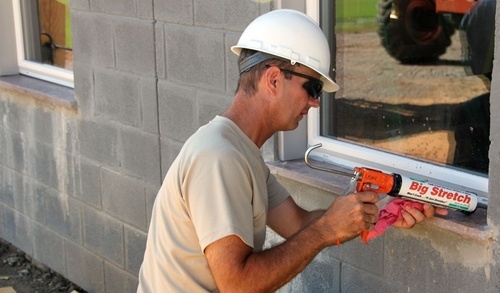

#STAY AFLOAT EMERGENCY LEAK SEALANT PATCH#
After the patch has dried, apply glue around the edges for a complete seal (dry 6 hours). Allow adhesive to become tacky for 5 minutes, and then place patch on the damaged area. Too much glue will often interfere with a proper repair. Apply glue to the under side of the patch and around the area to be repaired. Cut a piece of repair material large enough to overlap the damaged area by approximately 1″ and round off the edges.

It is recommended to do repairs in dry weather. Your Inflatable Boat comes with a repair kit as standard equipment. This repair might not be permanent so add a drop again at a later date to make it permanent. If you need to get on the water sooner, let dry for 30 minutes and then inflate the boat, inflating the compartment with the repair only 3/4 full. Apply a small drop of glue to cover the puncture and let dry for 12 hours. Deflate your boat, then clean and dry the area to be repaired. Punctures less than 1/8″ in size can be repaired simply without a patch. If you can narrow the area down, return with a spray bottle to identify the source of the leak. If you have no luck finding a slow leak with air bubbles, inflate the boat to it’s maximum air pressure and try to listen for the leak. Make sure the little rubber O-rings are still good. You might as well fix them all at the same time! Remember, the number one cause of slow leaks is due to poorly fitted valves. When you find the first leak, keep looking. Put some liquid detergent in a bucket of water and scrub it all over the boat with rag or big wash brush. To find tiny leaks, take the floor boards out, fully inflate the boat until it’s hard to the touch. If you continue to have problems with the valve, it’s probably time to order a new one. You can apply glue from the repair kit to seal small leaks around the valve or holes where the nylon string enters the valve assembly. If you see bubbles forming, check your valve fitting and base and be sure the valve insert is screwed on tight. We recommend mixing soap and water in a spray bottle. A leaky valve is rare, but if you do find a leak we can send you a replacement valve. The best tool to find leaks is soapy water in a spray bottle. If you are losing air pressure, (aside from pressure loss commonly caused by colder temperatures), check the boat over for leaks. Once you own the boat, you must make sure it is up to standard when you are on the water – so get all the facts before you buy. Remember: A Transport Canada compliance notice means that the boat met the construction standards at the time it was built. If you see a new boat for sale that does not have the required HIN and compliance notice, ask the seller to get them for you before you buy. Manufacturers and importers must place a HIN and compliance notice (if needed) on every boat they sell in Canada after demonstrating that it meets the construction standards. If the boat has a motor or is designed to have one, make sure it also has a Transport Canada compliance notice.
#STAY AFLOAT EMERGENCY LEAK SEALANT SERIAL NUMBER#
If you are buying a new inflatable boat in Canada, make sure it has a Hull Serial Number (HIN). The following is a direct quote taken from the Transport Canada website: Buying a Boat (section) It will also help the resale value of the boat in the future.What you should know before you buy an inflatable boat While I could survive ok without the thruster, it would be a shame to lose it as most of the time I am on my own cruising and it’s nice to have that little extra help when needed in those wet and windy winter days! My thought is if I have to get the boat out of the water to seal the ends I might as well go the extra and change the tube if time allows. The hole has appeared a few inches away from the propeller so this confirms that the pitting is most likely caused by aeration etc. I got inside the tunnel with a brush on a broom handle to get as much blacking in as I could but could already see evidence of pitting so I am certain that is the cause for this issue now. I have since blasted amd applied Jotun 2 pack a couple of years back. Unfortunately before I got the boat it had been neglected and obviously not blacked frequently. As people have mentioned here the tube is thinner material than the hull. The hull is a Liverpool boats build around 2002.

I don’t recall a slipway or dry dock at Bollington though? Interesting points about Kerridge, Bollington and Bullshead. Thanks for your comments so far everyone.


 0 kommentar(er)
0 kommentar(er)
